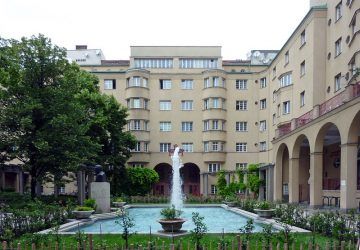David Byrne in Reasons to be Cheerful:

Around the world, the cost of housing is destabilizing cities. In Europe, low interest rates meant to spur growth have caused an affordability crisis. American cities are sprouting the kinds of slums usually associated with the developing world. Some have even argued that Hong Kong’s protests are, in reality, about a real estate market that has gotten so expensive young folks have essentially no chance of getting their own place.
What can be done? How can cities make sure that people other than the wealthy can find a foothold? A few places have shown that affordability is possible. One is Vienna, Austria.
A hundred years ago, in 1919, Vienna decided to do something about its shortage of low-cost housing for blue-collar workers and creative types. It began constructing publicly financed housing under a model that, over the years, has evolved into a system that works incredibly well. Far from being “projects,” “council houses,” or “schemies,” this is housing built by the best architects, where, over time, people of all income levels have come to live. It’s not perfect, but it’s pretty close.
Today, 62 percent of Vienna residents live in this “social housing.” (In New York, where I live, about eight percent of residents call public housing home.) This is a city that has, for many years running, been voted one of the most livable large cities in the world. Clearly they’re doing something right.
More here.
